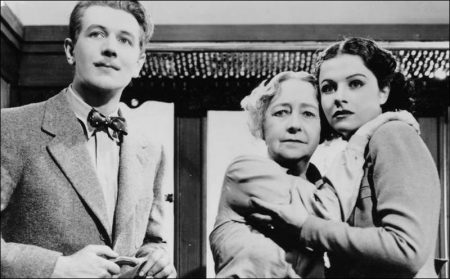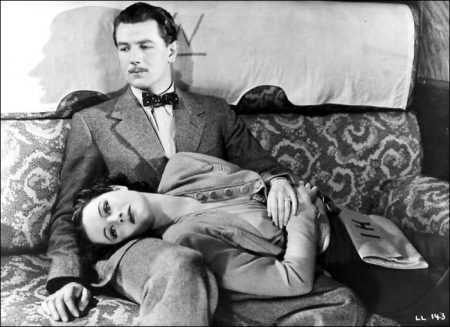The Lady Vanishes movie storyline. Passengers on a scheduled train out of the mountainous European country of Mandrika are delayed by a day due to an avalanche, and thus get up close and personal with each other out of necessity in the only and what becomes an overcrowded inn in the area. Once the train departs, the one person who it is uncertain is on the train is a middle aged English governess named Miss Froy (Dame May Whitty).
Iris Henderson (Margaret Lockwood), who was vacationing in Mandrika with girlfriends before heading back to England to get married, is certain that Miss Froy was on the train as they were in the same compartment and they had tea together in the dining car, but all those people who can corroborate her story don’t seem to want to do so. Iris’ thoughts are easily dismissed as a possible concussion as Iris was hit over the head just before boarding the train.
Iris will take anyone’s help in finding Miss Froy, even that of an Englishman named Gilbert (Sir Michael Redgrave), a musicologist with whom she had a not so pleasant encounter at the inn the evening before. As Iris and Gilbert go on their quest throughout the train, they believe there is a conspiracy amongst many of the passengers against the validity of there being a Miss Froy. But if there is a conspiracy, Iris and Gilbert still have to find Miss Froy and find out why anyone would want to kidnap a middle aged English governess.
The Lady Vanishes is a 1938 British mystery thriller film directed by Alfred Hitchcock, starring Margaret Lockwood and Michael Redgrave. Written by Sidney Gilliat and Frank Launder, based on the 1936 novel The Wheel Spins by Ethel Lina White, the film is about a beautiful English tourist travelling by train in continental Europe who discovers that her elderly travelling companion seems to have disappeared from the train. After her fellow passengers deny ever having seen the elderly lady, the young woman is helped by a young musicologist, the two proceeding to search the train for clues to the old lady’s disappearance.
The Lady Vanishes was filmed in the Gainsborough Studios at Islington, London. Hitchcock caught Hollywood’s attention with the film and relocated to Hollywood soon after its release.[2] Although the director’s three previous efforts had done poorly at the box office, The Lady Vanishes was widely successful, and confirmed American producer David O. Selznick’s belief that Hitchcock indeed had a future in Hollywood cinema.
The British Film Institute ranked The Lady Vanishes the 35th best British film of the 20th century. In 2017 a poll of 150 actors, directors, writers, producers and critics for Time Out magazine saw it ranked the 31st best British film ever. Having remained one of Hitchcock’s most renowned British films, a remake (also titled The Lady Vanishes) was released in 1979, and in March 2013 the BBC broadcast a TV adaptation starring Tuppence Middleton as Iris. Bill Kenwright adapted the 1938 film to a stage version, which went on a national tour in 2019. The play stars husband and wife Juliet Mills and Maxwell Caulfield and Lorna Fitzgerald.
The Lady Vanishes (1938)
Directed by: Alfred Hitchcock
Starring: Margaret Lockwood, Michael Redgrave, Paul Lukas, May Whitty, Cecil Parker, Linden Travers, Naunton Wayne, Basil Radford, Mary Clare, Googie Withers, Emile Boreo, Selma Vaz Dias
Screenplay by: Sidney Gilliat, Frank Launder
Cinematography by: Jack E. Cox
Film Editing by: R.E. Dearing
Art Direction by: Alex Vetchinsky, Maurice Carter, Albert Jullion, Albert Whitlock
Music by: Louis Levy, Charles Williams
MPAA Rating: None.
Distributed by: Metro-Goldwyn-Mayer (UK), 20th Century Fox (US)
Release Date: October 7, 1938 (London)
Visits: 120


